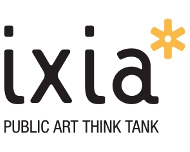ixia’s Public Art Survey 2012: Summary and Key Findings
Date uploaded: February 18, 2013
ixia’s Public Art Survey 2012: Summary
The Cultural Olympiad masked a significant fall in the size and value of the public art sector in England. In addition, the sector experienced a loss of younger workers, including younger artists, as well as officers within local authorities.
During autumn 2012, ixia undertook its second public art survey. The findings of the survey have been compared to those from 2011 and this has enabled us to begin to identify and examine trends relating to the public art sector in England. However, it has to be stressed that both surveys revealed a sector that is fragmented. Public art encompasses a variety of disciplines and organisations including arts, planning, local authorities, development, regeneration, health and education. As a result, there are a wide range of work contexts that include: self-employed, which applies to the majority and comprises artists and public art consultants; full-time and part-time public art employees; full-time and part-time public art employees who have some involvement with public art; voluntary workers; and students.
Having correlated the survey’s sample with known population distributions, ixia’s databases and other data sources, we are able to make the following observations and estimates about the public art sector in England:
- During 2012 there was an active and core public art sector of at least 1,000 people (20% less than in 2011) working within a market with a value of at least £53m (6% less than in 2011). The fall in market value was less than the sector was anticipating, with the Cultural Olympiad contributing up to £11m to ameliorate the impact of the recession;
- The main driver for the public art sector continued to be private sector money aligned to public sector policy, although we estimate that funding for public art via the planning system and capital projects undertaken by local authorities fell from £33m during 2011 to £22m during 2012;
- Art and architecture and socially engaged practice remained the most typical forms of public art projects, with events-based activities becoming more common within local authorities and arts organisations;
- The most important role for public art was shaping local, regional and national identity. This was followed by improving the design of the environment and performing an important social function;
- Commercial and retail developers valued public art as something good to do that improved the design of the environment and performed an important social role;
- Some housing developers believed that public art improved ‘kerb appeal’ and enhanced the impact and quality of their developments, but the main reason that they commissioned public art was because planners within local authorities requested its provision;
- Consultants and artists were more optimistic about the future than in 2011, but those workers closer to funding sources remained more pessimistic;
- In the longer term, recovery in the construction industry should eventually drive growth in public art. However, changes in planning policy guidance and a loss of officers within local authorities mean that new approaches to commissioning and delivery will need to evolve;
- Overall, the age profile of the workforce was older in 2012 than it was in 2011. Those in the 25 to 44 age group decreased from 45% to 38%, whilst those in the 45 to 64 age group increased from 49% to 55%;
- The survey continued to show a predominantly female workforce: 62% female vs. 38% male, with the female age profile being distinctly younger than the male age profile. Compared with the 2011 survey, there was a 5% increase in the percentage of male workers;
- 94% of workers were white and 3% of workers were disabled. These percentages were consistent with those for 2011.
To download key findings from the survey, please click here.(204 KB)

